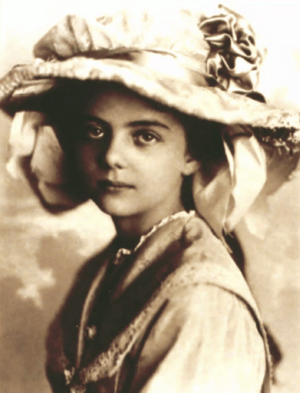Elinor Remick Warren facts for kids
Quick facts for kids
Elinor Remick Warren
|
|
|---|---|

Elinor Remick Warren in 1913
|
|
| Born | February 23, 1900 |
| Died | April 27, 1991 (aged 91) |
| Musical career | |
| Occupation(s) | Pianist, composer |
| Instruments | Piano |
Elinor Remick Warren (born February 23, 1900, in Los Angeles, California – died April 27, 1991, in Los Angeles) was an American composer and pianist. She wrote contemporary classical music. Her mother had studied with the famous composer Franz Liszt. She taught Elinor about classical music. Elinor's father was also a good singer.
Early Life and Musical Training
Elinor began piano lessons with Kathryn Cocke. She also took lessons in composing music from Gertrude Ross. She was very talented. Even before she finished high school, a music company wanted to publish her songs.
After high school, Elinor studied piano with famous musicians. These included Harold Bauer and Leopold Godowsky. She attended Mills College for one year. Then, she moved to New York City. There, she studied with composers Frank LaForge and Clarence Dickinson. They were known for their beautiful songs. Elinor earned money by playing piano for singers. She even went on tour with a singer named Margaret Matzenauer.
Composing and Performing
Elinor Remick Warren wrote music in a style called neo-Romantic. This means her music had strong feelings and beautiful melodies. She was skilled at both playing piano and writing music. She performed as a soloist with the Los Angeles Philharmonic orchestra two times. She also made recordings with different singers.
In the 1930s, Elinor started writing bigger pieces of music. One piece was The Harp Weaver. It was for a women's choir, orchestra, and a solo singer. Another big work was The Passing of King Arthur. This piece was later called The Legend of King Arthur. In 1940, after King Arthur was successful, she stopped performing. She wanted to focus only on composing music.
Elinor often wrote music about nature. She especially loved the American West. She also wrote about mystical themes. She lived and composed in Los Angeles for most of her life. This was unusual because New York was seen as the center for new American music. Still, her works were played often during her lifetime.
Teachers and Legacy
Elinor had many important composition teachers. These included Olga Steeb, Paolo Gallico, Frank La Forge, Clarence Dickinson, and Nadia Boulanger. She wrote over 200 musical pieces during her life. Many of her works have been recorded. Famous groups like the Roger Wagner Chorale and the Oslo Philharmonic have recorded her music. Baritone Thomas Hampson also recorded her songs. Elinor herself recorded some of her piano and piano-vocal works. Her original music papers and other materials are kept safe. They are in the Library of Congress in the Elinor Remick Warren Collection.
Personal Life
On June 17, 1925, Elinor married Dr. Raymond Huntsberger. They later divorced. In 1936, she married film producer Z. Wayne Griffin. They had two daughters and one son. Elinor Remick Warren passed away at her home when she was 91 years old.

